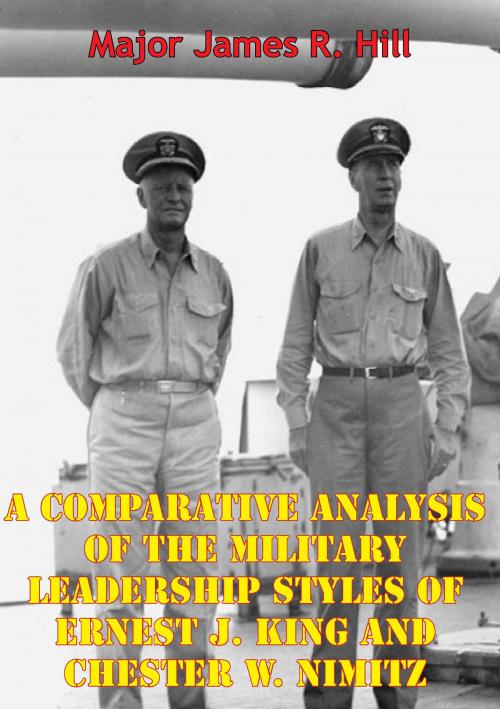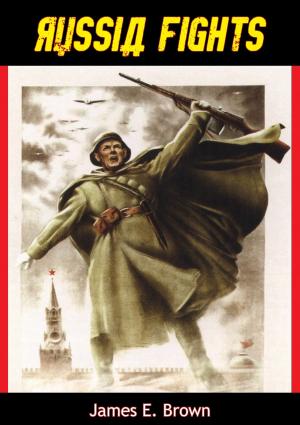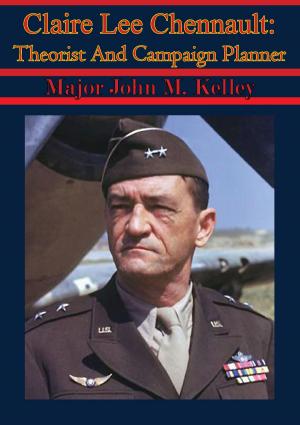A Comparative Analysis Of The Military Leadership Styles Of Ernest J. King And Chester W. Nimitz
Nonfiction, History, Germany, European General, Military, United States| Author: | Major James R. Hill | ISBN: | 9781786250490 |
| Publisher: | Verdun Press | Publication: | November 6, 2015 |
| Imprint: | Verdun Press | Language: | English |
| Author: | Major James R. Hill |
| ISBN: | 9781786250490 |
| Publisher: | Verdun Press |
| Publication: | November 6, 2015 |
| Imprint: | Verdun Press |
| Language: | English |
In a constantly changing world threatened by the likelihood of terrorist acts, the American people need military leaders who clearly demonstrate an understanding of American core values, and who are both competent and morally focused. In order to produce military leaders who meet these qualifications and who can successfully meet the future challenges America faces, it is important to develop and refine those leaders early and help them understand how to create and refine a successful leadership style. The process of developing leadership styles, however, is not easy and it requires a prodigious amount of determination, time, and planning from prospective future leaders. It also requires military training institutions to align their curriculums to promote leadership, as well as, to provide guidance and mentoring in order to help develop these future leaders.
One way to help develop leaders is to provide examples of both successful and flawed military leadership styles. There are many cases of each in American history. In particular, World War II leaders Admirals Ernest J. King and Chester W. Nimitz provide contrasting examples of naval leadership. An examination of the leadership styles of these two naval officers provides useful examples which future leaders can consider when reflecting on their own leadership styles. After careful review, it soon becomes evident that the leadership style of Nimitz closely aligned with the leadership styles of Generals George C. Marshall and Dwight D. Eisenhower, two World War II leaders I closely examined in my previous Master’s thesis. In addition, it also becomes evident that King was a diametrically different leader from these three leaders. He provides an example of a leader who was cold, harsh, and morally bankrupt. As result, reviewing the leadership styles of these World War II leaders will benefit future leaders as well as those they lead.
In a constantly changing world threatened by the likelihood of terrorist acts, the American people need military leaders who clearly demonstrate an understanding of American core values, and who are both competent and morally focused. In order to produce military leaders who meet these qualifications and who can successfully meet the future challenges America faces, it is important to develop and refine those leaders early and help them understand how to create and refine a successful leadership style. The process of developing leadership styles, however, is not easy and it requires a prodigious amount of determination, time, and planning from prospective future leaders. It also requires military training institutions to align their curriculums to promote leadership, as well as, to provide guidance and mentoring in order to help develop these future leaders.
One way to help develop leaders is to provide examples of both successful and flawed military leadership styles. There are many cases of each in American history. In particular, World War II leaders Admirals Ernest J. King and Chester W. Nimitz provide contrasting examples of naval leadership. An examination of the leadership styles of these two naval officers provides useful examples which future leaders can consider when reflecting on their own leadership styles. After careful review, it soon becomes evident that the leadership style of Nimitz closely aligned with the leadership styles of Generals George C. Marshall and Dwight D. Eisenhower, two World War II leaders I closely examined in my previous Master’s thesis. In addition, it also becomes evident that King was a diametrically different leader from these three leaders. He provides an example of a leader who was cold, harsh, and morally bankrupt. As result, reviewing the leadership styles of these World War II leaders will benefit future leaders as well as those they lead.





![Cover of the book Marines In World War II - The Guadalcanal Campaign [Illustrated Edition] by Major James R. Hill](https://www.kuoky.com/images/2014/august/300x300/9781782892809-WOFP_300x.jpg)


![Cover of the book NEW ZEALANDERS AT GALLIPOLI [Illustrated Edition] by Major James R. Hill](https://www.kuoky.com/images/2014/june/300x300/9781782892458-jd5I_300x.jpg)
![Cover of the book A War of Their Own: Bombers Over the Southwest Pacific [Illustrated Edition] by Major James R. Hill](https://www.kuoky.com/images/2014/august/300x300/9781782899266-HdAC_300x.jpg)




![Cover of the book The Official History Of The New Zealand Rifle Brigade [Illustrated Edition] by Major James R. Hill](https://www.kuoky.com/images/2014/june/300x300/9781782892472-cpR2_300x.jpg)
